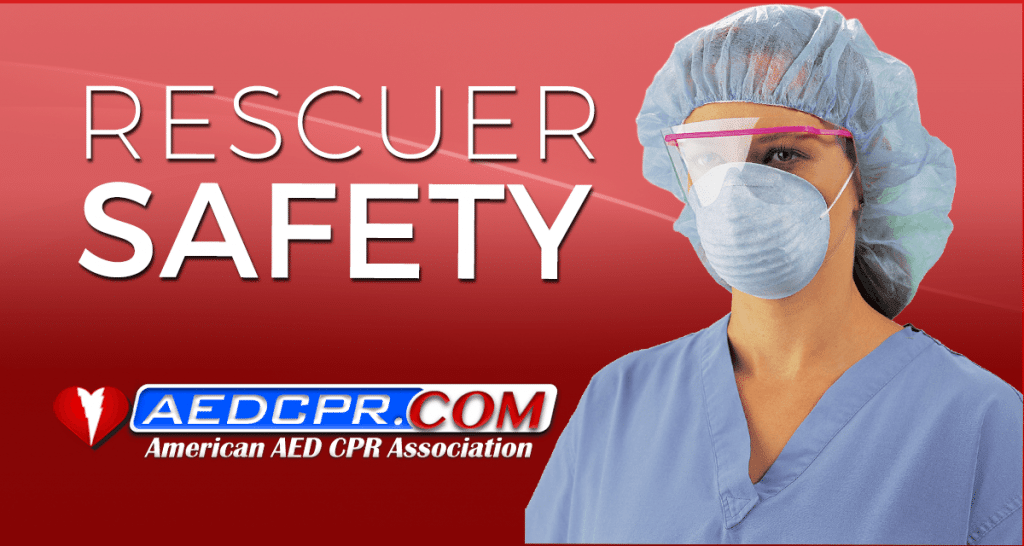
When you arrive at the scene of an emergency, it’s your duty as a first responder to provide care for those in need. But your own safety is important too. Whether you’re a professional or a lay-rescuer, you need to come prepared, and make sure you aren’t putting yourself in danger. This means having the right equipment, and understanding the potential threats you face by being there.
Personal Protective Equipment/PPE
Personal protective equipment, or PPE for short, refers to equipment worn by rescuers and healthcare providers to protect themselves from injury or infection during an emergency. There are many different types of PPE. Different situations call for different equipment. Bringing the necessary protective gear is a fundamental part of safety, for professional and lay-rescuers alike. For easy access, PPE should be kept in the same location as your first-aid kit.
The following are some of the more common types of PPE.
Hand Sanitizer
It’s a fact that using soap and warm water is the best way to rid your hands of infectious diseases, preventing them from spreading. At the scene of an emergency, however, it won’t usually be available. In those cases, alcohol-based hand sanitizer is the next best thing. It can kill almost all bacteria, many types of fungi and some viruses. Just remember to wash your hands as soon as you get the chance.
Gloves
Most rescuers responding to a medical emergency will want disposable surgical/exam gloves. If proper hand hygiene is your first line of defense against infection, then gloves are your second. Exam gloves are usually made out of latex, nitrile or vinyl. Some people are allergic to the protein found in latex. Nitrile and vinyl are good alternatives because they’re much more hypoallergenic. In any case, you should remember to follow World Health Organization guidelines when wearing medical gloves.
Different situations may call for a different pair of gloves. For example, a firefighter performing an extrication operation wants their own pair of durable, heat-resistant rescue gloves to protect against burn or injury.
CPR Masks/Barrier Devices
CPR masks allow rescuers to perform rescue breathing without direct physical contact. The most common type of CPR mask is a flat, plastic barrier that lays across the patient’s mouth and nose, with a hole in the middle. The hole sometimes has a filter or one-way valve to protect the rescuer from potential infection while they give rescue breaths.
Face Masks
There are different kinds of face masks, but the most common type available to lay rescuers is a simple surgical mask. They’re useful for situations where large particles and contaminating liquids (usually body fluids) become airborne. However, they do little to block small particles and airborne viruses. N95 respirators are a more effective alternative in that setting, and are also available to the general public, but they can be hot and uncomfortable to wear for extended periods of time. They also need to be properly fitted to your face in order to be effective.
Eye Protection
Simple plastic glasses and goggles are similar to face masks. They can protect your eyes when dangerous or irritating liquids become airborne. There are other, less common forms of eye protection that meet different needs. These include impact-resistant goggles, which protect against shrapnel, and full-face shields with replaceable parts.
Scene Safety
No two accident scenes are alike. When you arrive on the scene of an accident, you need to first determine if it safe before proceeding. This means being completely aware of any and all potential hazards at the scene. There are many factors to consider when sizing up the scene. How is visibility at the scene? Is it structurally sound, or does something look like it might collapse? Is there traffic? Are there downed electrical lines or fires? Chemical spills? Can you move a patient if you needed to? If the scene suddenly became unsafe, would you know how to get out?
It’s not enough to be prepared; you also need to be present. You must remain aware and adaptive in order to react to sudden changes in the environment. Surveying the scene is not something you do just once. It is a continuous process that only ends when you leave or when you’re absolutely certain the danger has passed.
Power Lines & Electrical Safety
When a traffic accident, natural disaster or other event brings power lines down and in range of pedestrians and vehicles, first responders need to be extra careful. If a live wire is making contact with the ground or a vehicle, the biggest threat of an electric shock comes from either “ground potential” or “touch potential.” “Potential” in this case references a difference in voltage. Electricity always flows from a point of high voltage to a point of low voltage, taking the path of least resistance. If a person becomes a bridge between a high voltage and low voltage point, they will suffer an electric shock that can lead to injury or death.
Step potential is the step voltage between the feet of a person standing on electrified ground. In other words, if you have one foot in a high-voltage area, and one foot in a low-voltage area, the electricity will travel through you if your body offers less resistance than the earth between them. Touch potential is the voltage between an energized grounded object and the feet of a person in contact with that object. For example, if you touch a car that has contact with a power line, the electricity could try to leave the car through you.
Electricity can be an invisible killer. Just because a wire isn’t visibly sparking or showing its lethal characteristics doesn’t mean it isn’t dangerous. You can’t easily tell if a wire is live just by looking at it. Additionally, a dead line can come back online any time. It’s best to err on the side of caution. Assume all downed wires are live and dangerous until utility personnel confirm that you can proceed safely.
Fires
Burning is not the only threat fire poses at the scene of an accident. With it comes the risk of smoke inhalation, as well as potential exposure to carcinogenic agents. Heat stress, and subsequently heat stroke can also occur if you’re exposed too long. Another immediate concern is the possibility of flammable or combustible material on the scene. If any are present, the situation could become lethal at any moment.
There’s No Substitute For Training
All of this assumes you’ve taken a course in CPR or first aid. If you haven’t, there’s no need to wait. Online CPR classes allow you to learn quickly and on your own schedule.
